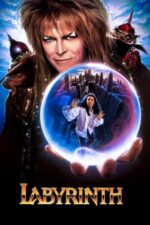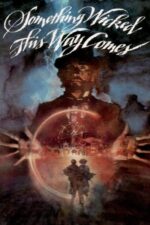Lost in Thought: Why Mazes Captivate Us on Screen
Isn't there something inherently fascinating about a maze? Not just the physical challenge of finding your way, but the feeling it evokes – disorientation, uncertainty, a sense of being both trapped and tantalized by possibility. It’s no surprise that filmmakers have consistently returned to this motif, using mazes not just as literal settings, but as powerful metaphors for life's complexities.
Think about it: a maze is inherently symbolic. It represents choices, paths diverging, the potential for dead ends, and the elusive promise of an exit – or perhaps, a deeper understanding. “The Maze,” with its Scottish castle and rapidly aging protagonist, beautifully illustrates this. The hedge maze isn’t just a pretty backdrop; it's a visual representation of Gerald’s own internal turmoil, his sudden disengagement from Kitty mirroring the twisting, confusing nature of his predicament. It’s a gorgeous film, by the way – if you enjoy atmospheric mysteries with a touch of gothic romance, definitely seek it out!
But the maze isn't always about romantic mystery. “Cube,” for example, takes the concept and strips it down to its barest bones: a literal labyrinth designed to test survival instincts and expose human nature under pressure. The claustrophobia is palpable; each room represents another potential trap, another layer of psychological torment. It’s a stark contrast to the whimsical fantasy of “Labyrinth,” where Sarah's journey through Jareth’s world is filled with quirky creatures and musical numbers (seriously, David Bowie as the Goblin King? Iconic!). Yet both films use the maze structure to force their protagonists to confront something essential about themselves – responsibility in Sarah’s case, and the fragility of sanity in “Cube.”
Even a film like "Bram Stoker's Dracula," which isn't primarily about a physical maze, uses the idea of disorientation and cyclical repetition. Dracula's memories loop back on him, trapping him in a past he can't escape – a psychological labyrinth as potent as any hedge row.
And let’s not forget “The Cabinet of Caligari,” a silent film masterpiece that practically is a maze of distorted perspectives and unreliable narration. The entire world feels like a warped funhouse, blurring the lines between reality and delusion. It's a brilliant example of German Expressionism, using stylized sets to reflect the protagonist’s fractured mental state.
The recurring use of mazes across genres – from gothic romance to sci-fi thriller to fantasy adventure – speaks volumes about their enduring appeal. They offer filmmakers a visual shorthand for complex themes and allow audiences to project their own anxieties and hopes onto the narrative. So, next time you're looking for something thought-provoking (and maybe a little disorienting!), consider a film that takes you on a journey through a maze – literal or metaphorical. You might just find yourself lost in more than just its pathways.
What are your favorite films featuring mazes? I’d love to hear about them!







































